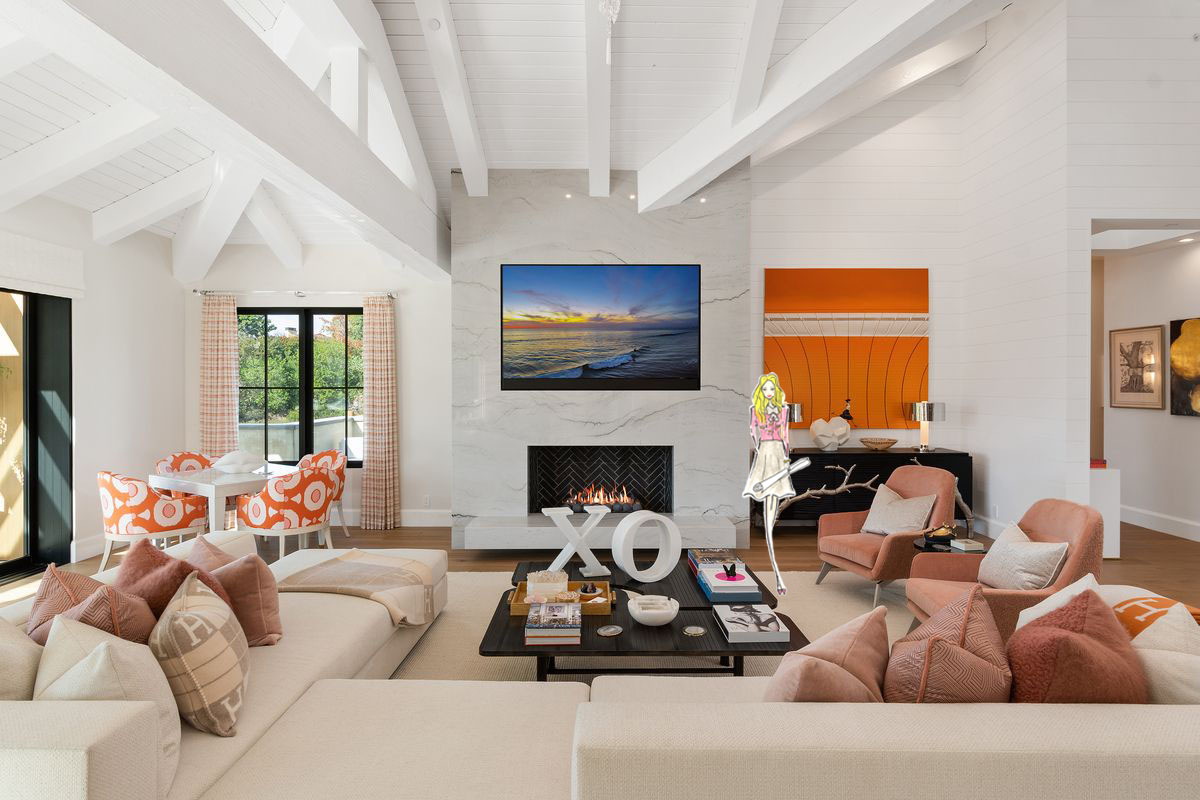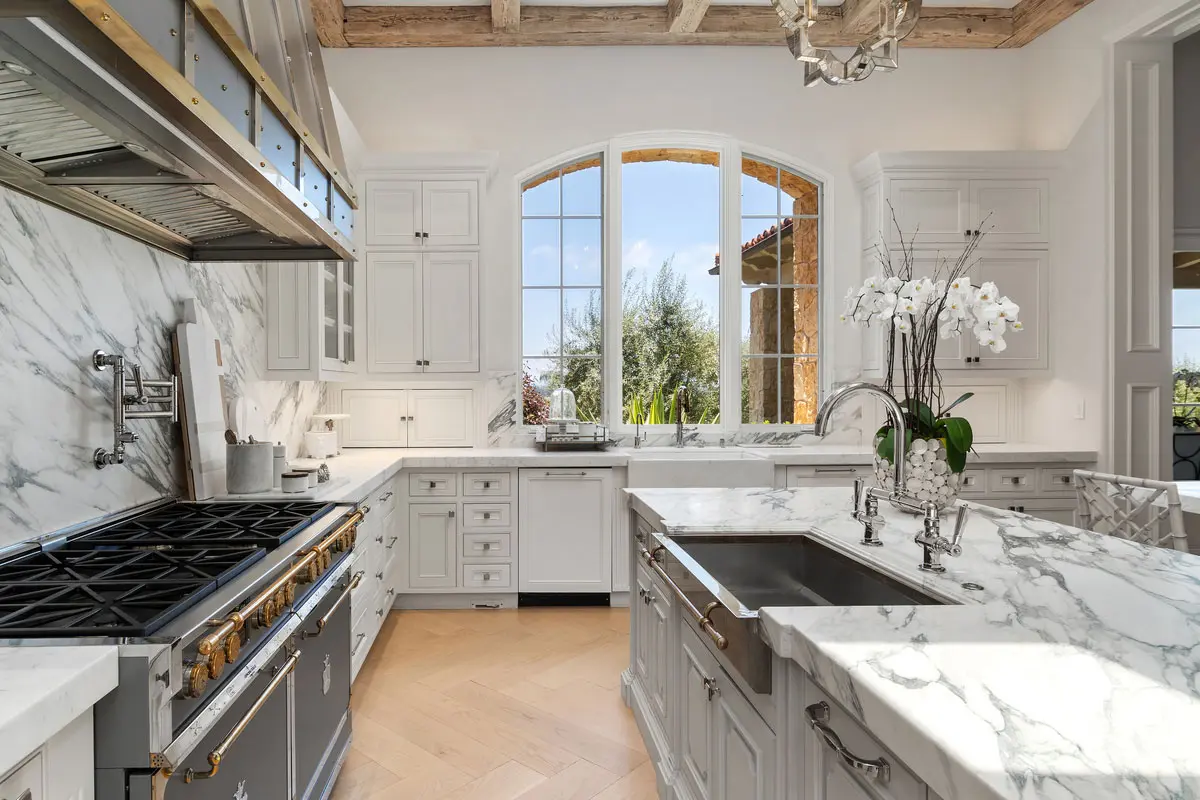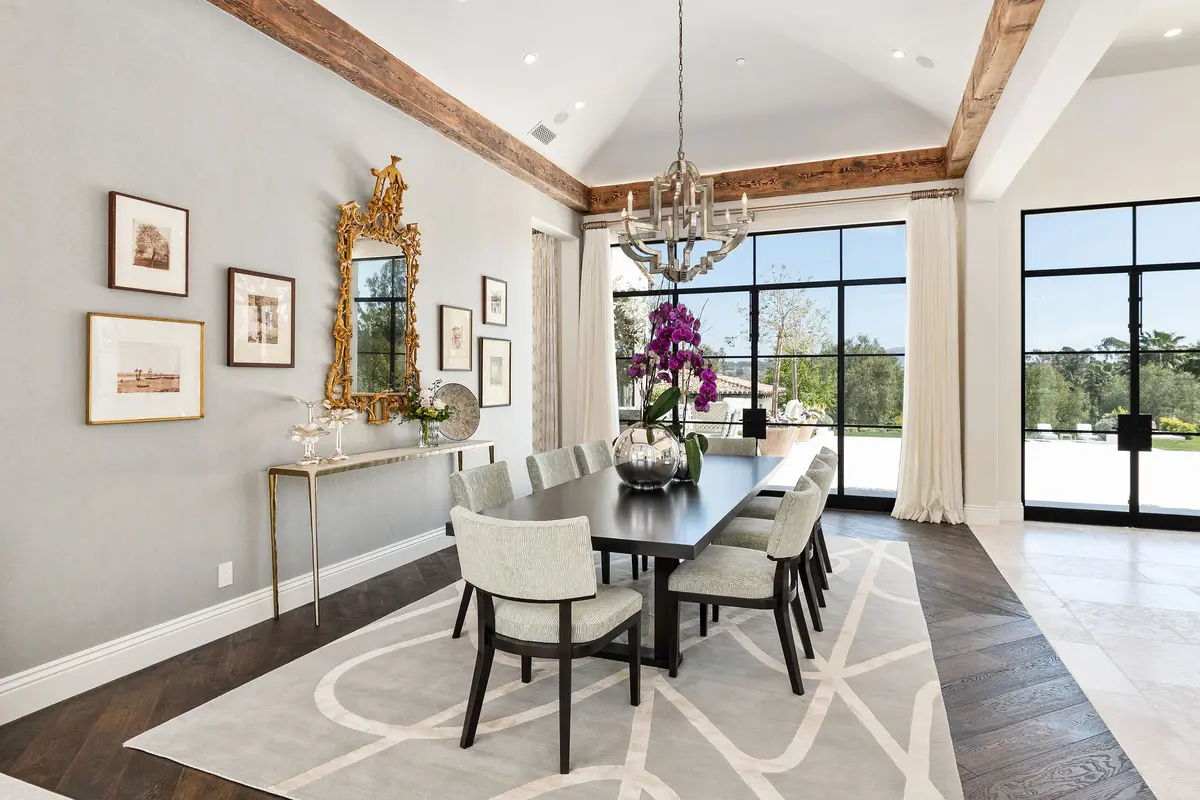A room is more than walls, furniture, or light—it’s the feeling that ties everything together. And often, that feeling lives in the final surface: the paint on the wall, the stain on the wood, the finish on your fixtures. These finishing elements are where craftsmanship meets soul. At Kern & Co Designs, we treat paint, stain, and finish selection with the same care as architecture and millwork—because every coat, tone, and sheen contributes to the narrative of a space.
Paint vs. Stain: Choosing for Surface and Story
When selecting finishes, start with asking: what surfaces will we treat—and what story do we want them to tell? A richly stained walnut beam whispers heritage and warmth; a soft‑matte painted wall suggests calm and refinement. In cabinetry, we often choose wood stain selection that reveals grain rather than conceals it. On trim and walls, high end paint colors that complement light and shadow become the basis for the rest of the design.
Stain works magic when the wood is beautiful and the grain worth showing: built-in cabinetry, custom millwork, ceiling beams. Paint, especially when we go for luxury paint finishes, can unify architectural elements—walls, doors, moldings—so the entire room feels cohesive. Sometimes we even use stains and paints together: stained paneling framed by painted trim or vice versa.
Understanding Finish: Sheen, Texture & Effect
Beyond color, the finish—or sheen—of paint or stain plays a quiet yet vital role. A matte or eggshell finish absorbs light gently, softening walls and making rooms feel calm and enveloping. Satin or low‑sheen finishes reflect more, offering subtle polish without the glare; gloss and polished finishes bring drama and highlight architectural details or moldings. We always consider where the eye naturally falls—for example, high‑touch surfaces like cabinetry often benefit from a slightly tougher satin or semi‑gloss finish, while ceilings and large walls lean toward flat or matte to reduce reflection.
Texture also adds richness. Venetian plaster, limewash, or hand‑troweled mortar walls create depth and visual interest; brushed stains or limed woods show grain detail; softly buffed wax finishes on metals lend understated luster. These textures interact with the finish (polished, rubbed, aged), creating layers of sensory richness—not just what you see, but what you feel, even what you hear in the room.
Light, Context, & Longevity
One thing we never overlook: how light enters a space, what kind of use it will get, and how the finish will age. North‑facing rooms often need lighter, warmer tones (paint or stain) to counter cool light. Kitchen cabinetry may be washed, handled, or cleaned often—so we choose finishes that are durable, easy to clean, and resilient under frequent use. Natural oils or hard wax finishes bring beauty but sometimes sacrifice some durability; conversely, modern enamel or polyurethane formulas with matte or satin sheen offer both richness and practicality.
Context also means considering neighboring rooms. A luxurious powder room may embrace a dramatic finish (high gloss paint or stained wood), while adjacent corridors need finishes that harmonize rather than compete. We curate a palette of paints and stains so that finishes flow from one room to the next, achieving cohesion without monotony.
Signature Finishes: When The Final Layer Becomes Art
The most memorable rooms are those where finishes are more than incidental—they become part of the design signature. A dark stained wood wall punctuating a neutral living room; metallic‑gloss crown molding catching candlelight; aged brass fixtures lightly polished—not bright, but mood‑rich; ceiling beams limed or bleached to mirror soft daylight. These are finishes that feel intentional, elevated, and as comfortable as they are beautiful.
At Kern & Co, custom finish work often includes layering: base coat, stain or glaze, protective topcoat, and sometimes a hand‑rubbed wax or patina. We treat finishes not as afterthought, but as the closing harmony in the design composition.



